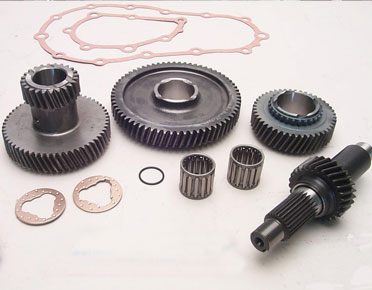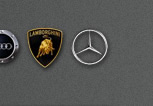

|
The principle behind this is easy. It's easier for the engine to turn the rear wheels if the gearing is "low". Low gearing is actually a numerically higher ratio than "high" or "tall" gearing.
Why are there different differential ratios?
Different amounts of torque and horsepower in different engines make the need for different gear ratios necessary. When an engine has a lot of torque, it generally means that it has a low maximum rpm level, therefore, to attain reasonable highway speeds, you need a "tall" differential. When rpm levels are higher, diff ratios can be made lower to give faster acceleration. BMW does not chose differential ratios arbitrarily, they are chosen for a specific compromise of acceleration and cruising comfort.
Why chose a different ratio?
BMW may have a different idea of ideal to you. Changing ratios can give faster acceleration, but at a loss of theoretical top speed, and at higher cruising rpm.
What is theoretical top speed?
Theoretical top speed is the mathematical calculation of maximum engine rpm, divided by the top gear ratio of the transmission, divided by the differential ratio, which gives the number of wheel rotations per minute. When you take the circumference of the wheel and divide it into a mile, you can determine the minutes taken to cover a mile, or, the miles per hour the vehicle will travel.
Example*:
Maximum engine rpm: 7000
Top gear ratio: 0.83:1
Differential ratio: 3.15:1
Wheel circumference: 80 inches
7000 / 0.83 = 8434 driveshaft revolutions per minute.
8434 / 3.15 = 2677 wheel revolutions per minute
Inches in one mile = 63,360
63,360 / 80 = 792 wheel revolutions per mile.
2677 / 792 = 3.38 miles per minute.
3.38 x 60 = 202.8 mph
Most vehicles are incapable of reaching their theoretical top speed, primarily from electronic vehicle speed limiters, but often also from aerodynamics.
*Numbers are for informational purposes only and do not represent any particular model. All figures are rounded to the nearest 100th.
How much am I losing by going to a lower differential ratio?
Again, you can do the math. Take your current gear ratio, and subtract it from the new ratio. Divide the difference by the original ratio and multiply the result by 100. This will give you your percentage change.
|







